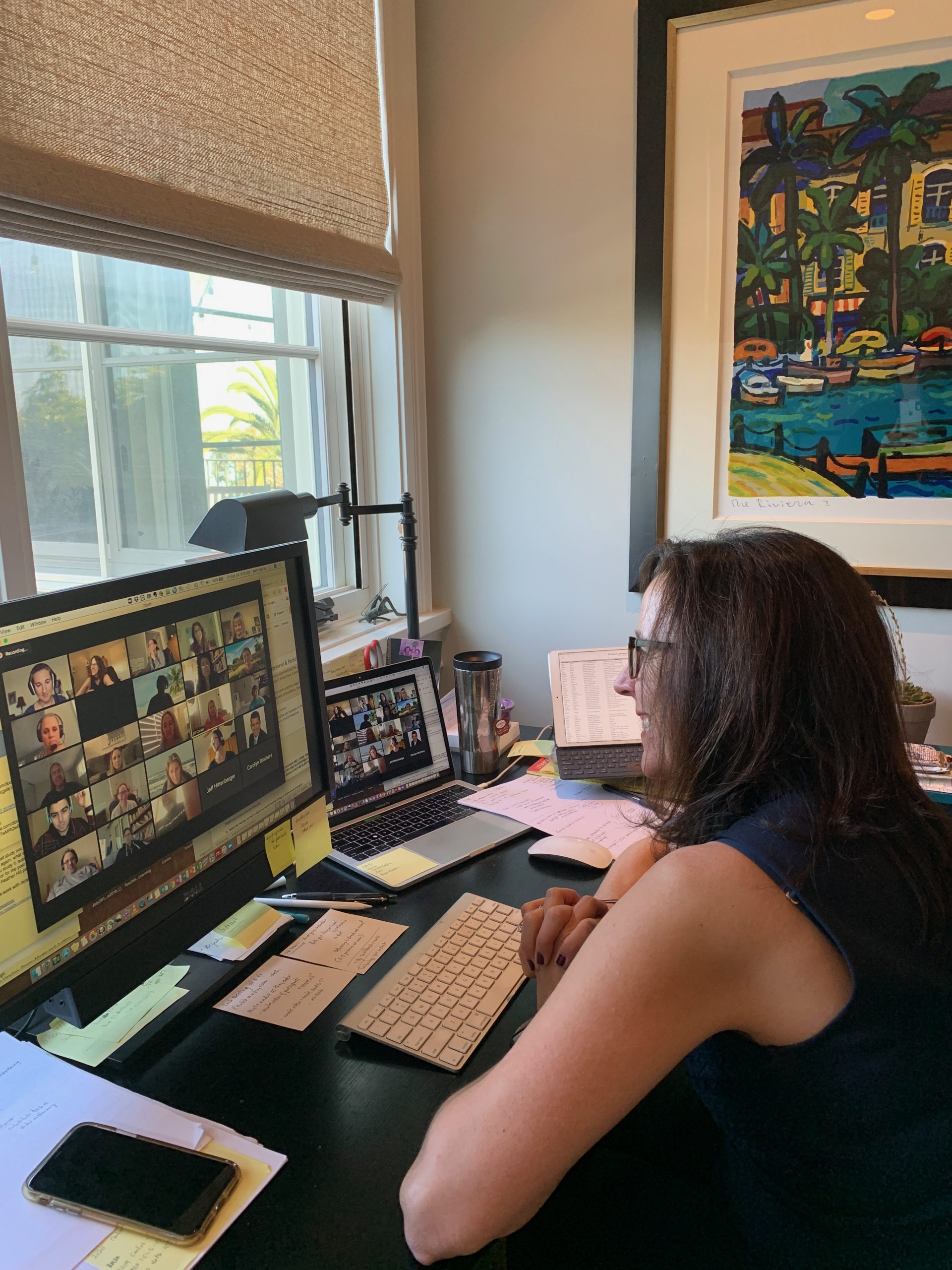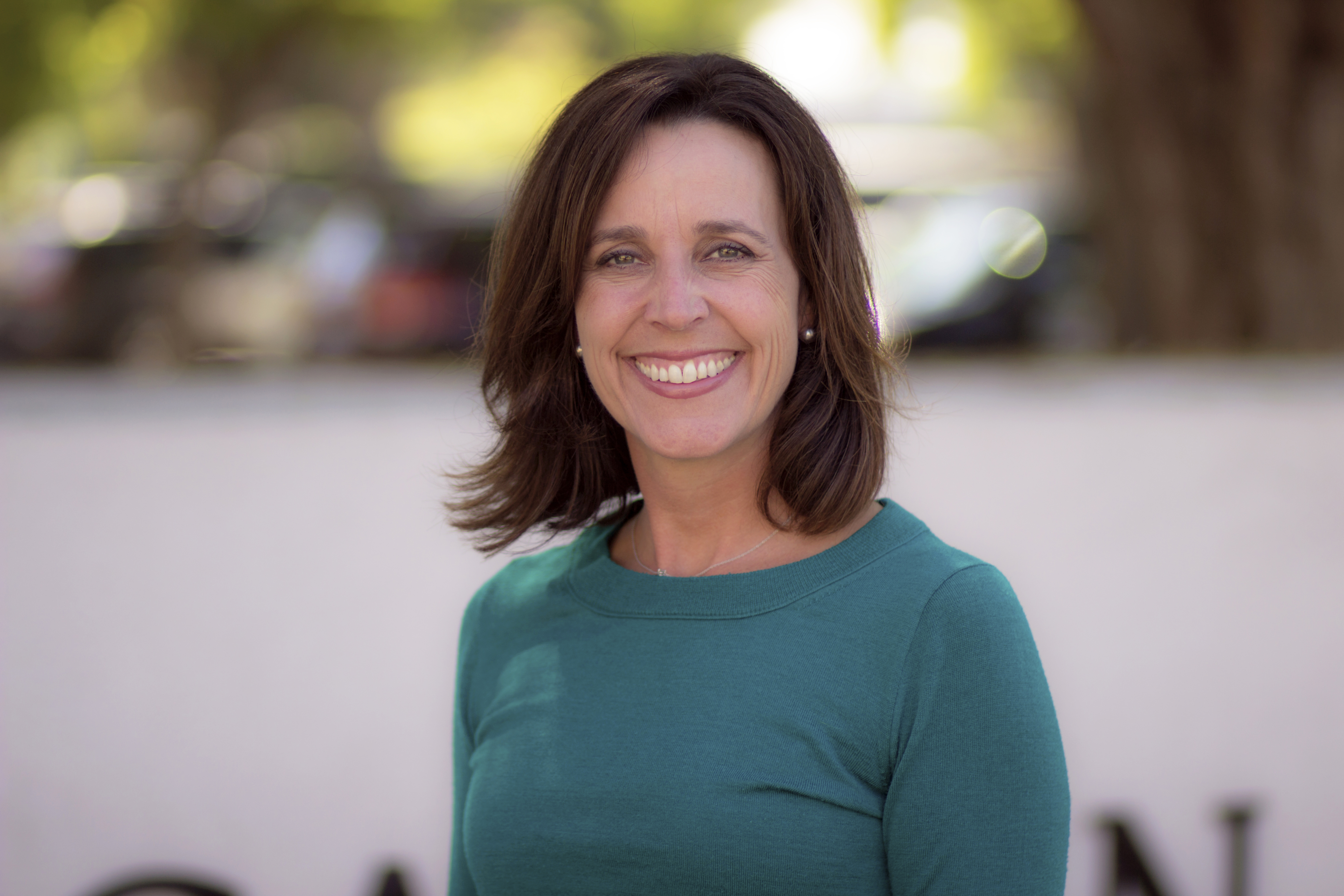Teacher Academy Hosts Dialogue: Navigating Remote Instruction in K12 Classrooms
By Elizabeth van Es
Faculty Director, UCI Teacher Academy
Associate Dean and Associate Professor, UCI School of Education
May 12, 2020

On April 24th, the UCI Teacher Academy hosted two virtual gatherings to bring teachers and school leaders together to discuss how they have navigated moving to remote instruction in an effort to “flatten the curve” during the coronavirus pandemic. Our goal was to create a space to hear the challenges districts and teachers experienced in the first month of remote instruction and to share with each other creative strategies they have developed to respond to these challenges. We strongly believe that district leaders and teachers have local expertise and that if space is created to share solutions, they can learn new strategies and ideas from one another and generate new knowledge and practice together. At the same time, we understand that teachers and districts need support using new technologies to achieve their learning goals and re-conceptualizing instruction in a remote context. By bringing this group together, we were able to identify topics for professional learning that we plan to offer as we all prepare for some form of remote instruction in the next academic year.
Teachers and district leaders converged around a core challenge they were facing – connecting with students. This issue took on various forms. At the district level, connecting with students involved ensuring that they have the equipment to connect to the school remotely – both having computers and having stable internet connections. At the time of our meeting, in some districts, as many as 40% of students did not have internet access. We were encouraged by the actions many district leaders were taking to equip students with what they needed. For some, this involved connecting with local cellular providers requesting donations for mobile hotspots. For others, it meant identifying students who needed computers and getting them in students’ hands. And in other districts, this meant setting up regular times for families and students to pick up materials at their local school site to ensure that their students continued to have access to the content.
Elizabeth van Es uses Zoom to lead a virtual discussion on remote instruction with local teachers and school leaders.
For teachers, connecting to students looked somewhat different. Teachers and students are accustomed to seeing each other day to day – connecting with each other on a very personal level. Teachers were challenged to find ways to connect with students in consistent and personal ways. As we listened to teachers, we heard many creative strategies. Many scheduled daily check-ins and small group tutoring time, using online meeting software such as Zoom or Google Meets to facilitate these meetings. They also shared that having 30-40 students online was not the same as having them all walk through the door where a teacher could say hello and make a personal connection. Teachers expressed their deep concern for students’ well-being. They wanted the students to know that they cared about them and they also wanted to humanize what we were all experiencing. Some sent out weekly emails with stories about how their lives have been upended by remote work to share how they have had to adapt to this environment. Some made personal connections with students by calling home to make them aware of the expectations of students and parents in this remote context. And others developed a regular weekly schedule so that students could develop a set of routines that would create some sense of normalcy in their days and weeks.
One of the challenges teachers continued to encounter concerned how to manage assessment and accountability. Given the unique circumstances, many districts decided to remove a formal grade structure and moved to a Pass/ No Pass assessment system. This raised challenges for teachers to ensure that students remained motivated and accountable to participate in their classes. We heard many ways that teachers navigated this challenge. One teacher shared that she required attendance to earn points, resulting in attendance jumping from 5-10% each day to 70-80% present. Another teacher shared that she and her colleagues shifted to more performance assessments, asking students to create Google slides that represent their thinking and providing voice-over to capture their explanations of their thinking. Some turned to using Pear Deck, an add-on to Google Slides, that allows teachers to incorporate interactive questions for formative assessment. Other teachers adopted more flexible grading policies to encourage students to submit their assignments even if there were barriers at home that made it challenging to meet deadlines. What we found through these stories is that teachers adapted the strategies they used in their classroom to this new context – holding students accountable to be present, engaging them in critical thinking and communication about their ideas, using formative assessment strategies to get insight into student thinking and using that to inform future decisions.
As teachers continued to connect with students, they heard from their students what was challenging for them at home. Some students did not create a space at home where they could be online and study, with fewer distractions at home. Teachers helped them identify a space – even if just a corner in their bedroom – that they could call their remote classroom seat. Some also shared that they had responsibilities at home that made it difficult to connect each day. By opening this line of communication, the teachers could use more asynchronous methods – posting a video online or asking students to check in at some point each day. In this way, the students remained accountable to the course, and teachers were able to adapt to their individual needs. There was an overwhelming consensus among the group that they needed to learn to become more flexible and responsive to students, while also holding students to high standards and expectations.
As we anticipate that the next school year will continue with some form of remote instruction, we are encouraged by all we learned from this group. Many shifted their instruction to continue best-practices in teaching and learning and several others were eager to learn what they could do better to connect with and engage students in meaningful learning. There was an overwhelming sense among this group that if we find ourselves in a similar situation next year, they and their colleagues will need to do some things differently. Many asked the UCI Teacher Academy for targeted professional development to help prepare them for this new situation. With this in mind, the Teacher Academy will be offering virtual seminars focused on some of the following topics:
- Offering remote instruction to elementary-aged learners
- Effective technologies for engaged, meaningful learning
- Assessing student learning in remote teaching
- Facilitating meaningful discussions online in a synchronous format
- Supporting students with specialized learning needs in an online context
- Maintaining relationships with students and parents in remote instruction
We hope that you and your colleagues will join us this summer!

Elizabeth van Es is Faculty Director of the UCI Teacher Academy, and Associate Dean and Associate Professor at the UCI School of Education.
